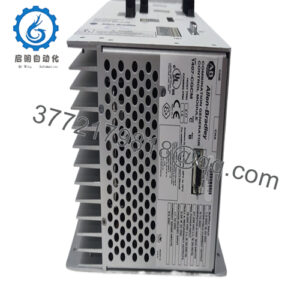Description
- Product Model: Bently 3500/22M 138607-01
- Brand / Series: Bently Nevada / 3500 Condition Monitoring
- Module Type: Transient Data Interface (TDI) / rack interface + communications processor
- Key Features:
- Combines rack interface logic (RIM) and communication processor into a single module.
- Supports Ethernet (10Base-T / 100Base-TX) and optional fiber (100Base-FX) I/O for communications.
- Captures both static values (steady-state) and, optionally via a Channel Enabling Disk, transient (waveform) data.
- Diagnostic front LEDs (OK, TX/RX, TM, CONFIG OK), OK relay, and front USB port for configuration.
- 350022M 138607-01
- 350022M 138607-01
Applications & Industrial Context
In the Bently 3500 machinery condition monitoring system, one of the key challenges is bridging the internal rack modules (vibration monitors, temperature modules, etc.) with external supervisory systems (System 1, diagnostics servers, control systems). The 3500/22M 138607-01 module is designed for exactly that role: it is the transient data interface (TDI) that sits at the gateway between the rack and host software.
In older systems, the Rack Interface Module (RIM) handled data polling and static values, while a separate communications processor (e.g. TDXnet or custom bridges) relayed data out. The 138607-01 merges those functions, streamlining architecture and reducing complexity.
Because of this, in many retrofit or new installations, replacing a RIM + external communications bridge with a 138607-01 helps consolidate wiring, cut maintenance points, and simplify configuration.
You’ll find 138607-01 used in power generation plants, compressors, gas turbines, petrochemical installations, and heavy rotating machinery setups where monitoring and diagnostics are critical. Its ability to handle static and transient data allows it to support both trend-based diagnostics and waveform capture.
In systems where real-time data is needed on control loops or analytics platforms, 138607-01 often sends data via Ethernet in formats consumable by System 1 or similar software.
Product Role & System Integration
Functionally, 138607-01 operates as the transient data interface (TDI) for a 3500 rack. It occupies Slot 1 (the slot adjacent to the power supplies) in the rack and interfaces with all M-series monitor modules in that rack.
Its key roles:
- Collect steady-state (static) data values from monitor modules, such as vibration magnitudes, phase, temperature, etc.
- Capture transient waveform data (high-speed samples) when configured (via a Channel Enabling Disk) to support advanced diagnostics and event analysis.
- Act as the communications bridge: send data over Ethernet (copper or fiber) using protocols such as BN Host, TDI protocol, or TCP/IP for System 1 and other host systems.
- Provide interface features: OK relay for rack health, diagnostic LEDs, USB for local configuration, reset and keylock to guard configuration changes.
It is important to note: 138607-01 is not in the critical monitoring path. A failure of the TDI module does not prevent the internal monitor modules from continuing their protection tasks (trip logic, monitoring) — but you may lose data export, diagnostics, or transient capture.
When a rack is set up for Triple Modular Redundancy (TMR), a TMR version of the TDI is used instead; 138607-01 is the standard (non-TMR) version.
Technical Features & Benefits
Let’s explore the core features of 138607-01 and their advantages in practice.
Integrated RIM + Communication Processor
By combining the functions of a classic Rack Interface Module (RIM) and a communications processor, 138607-01 reduces inter-module wiring and simplifies system architecture.
Ethernet I/O — Copper & Fiber
It supports 10Base-T / 100Base-TX (copper Ethernet) by default, with optional 100Base-FX fiber I/O module versions. The module auto-senses link speed.
Static & Transient Data Collection
Static (steady-state) data capture is built in. To capture dynamic waveform data, the user can install a Channel Enabling Disk that unlocks transient data capabilities.
The module supports configurable sampling rates (e.g. 1024 samples/rev, 720 samples, etc.) and both synchronous and asynchronous data.
Front-Panel Diagnostics & Controls
LED indicators:
- OK LED — indicates module is operating normally
- TX/RX LED — shows communication activity
- TM LED — indicates Trip Multiply mode
- CONFIG OK LED — indicates valid rack configuration
Other features:
- OK Relay contact — user-selectable normally open / normally closed, for indicating rack health. Rated to 5 A @ 24 VDC / 120 VAC.
- Keylock / RUN vs PROGRAM mode — protects accidental reconfiguration.
- Rack Reset button on front panel — clears latched alarms or defeats timed OK channels.
- Address switch for setting the rack address (127 possible addresses)
Power & Environmental Specs
- Power consumption approximately 10.5 W under standard load.
- Operates over –30 °C to +65 °C, storage –40 °C to +85 °C.
- Dimensions (monitor / main module): 241.3 × 24.4 × 241.8 mm; weight ~0.91 kg.
Standards & Approvals
The module meets EMC and safety standards: EN 61000-6-2 (immunity) / EN 61000-6-4 (emissions) ; hazardous area certification (ATEX / IECEx) for certain variants
Redundancy & Compatibility
For racks configured for TMR, a dedicated TMR version of the TDI must be used. The 138607-01 standard version is intended for non-redundant or redundant (dual) racks.
It is backward-compatible in designs upgrading from old RIM + external communication units.
These features make 138607-01 a robust, integrated, and field-friendly gateway module for 3500 systems.
Technical Specifications Table
| Parameter | Specification / Detail |
|---|---|
| Model / Order | Bently 3500/22M 138607-01 (Transient Data Interface) |
| Function | Rack interface + communication processor (RIM + comms combined) |
| Slot / Position | Slot 1 in 3500 rack (next to power supplies) |
| Data Capabilities | Static (steady-state) capture; optional dynamic (waveform) via enabling disk |
| Ethernet I/O | 10Base-T / 100Base-TX (auto-sensing) |
| Optional Fiber | 100Base-FX (fiber optic) I/O module variant |
| Power Consumption | ~10.5 Watts |
| Operating Temp | –30 °C to +65 °C |
| Storage Temp | –40 °C to +85 °C |
| Dimensions | 241.3 × 24.4 × 241.8 mm (module) |
| Weight | ~0.91 kg (2 lbs) |
| LED Indicators | OK, TX/RX, TM, CONFIG OK |
| OK Relay | 5 A @ 24 Vdc / 120 Vac (user-selectable NO/NC) |
| Communication Protocols | BN Host, TDI, TCP/IP over Ethernet |
| USB Interface | Front-panel USB-B for configuration / data retrieval |
Installation & Maintenance Guidance
Here are recommended practices and caveats when deploying or servicing 138607-01.
Slot & Backplane Placement
Always install 138607-01 in Slot 1 (adjacent to power supply modules). Incorrect placement will break rack communication.
Ensure full engagement with backplane connectors.
Upgrade / Replacement from RIM
If migrating from a RIM + external comms design, removal order should be: RIM first, then its I/O modules; then insert the 138607-01 and matching TDI I/O modules.
Channel Enabling Disk for Transients
To enable transient (waveform) data capture, insert a Channel Enabling Disk in the module. Configure which channels are dynamic vs static. Without this, only steady-state operation is supported.
Network Setup & Configuration
Set up Ethernet link parameters (speed, duplex) and ensure host systems are configured to accept TDI data streams. Use good-quality shielded cables for 10/100 Ethernet, or fiber if using FX variant.
LED & Diagnostics Checks
On startup and during operation, check LED states:
- OK LED should show normal operation
- TX/RX LED should blink during communication
- TM LED indicates Trip Multiply mode (when active)
- CONFIG OK LED shows valid configuration loaded
If LEDs are abnormal, investigate module faults or configuration issues.
OK Relay Setup
Configure the OK relay (NO or NC) in software as desired. Test it with a known fault condition to ensure that it correctly signals a NOT-OK status.
Environmental & Thermal Considerations
Ensure racks are ventilated; avoid placing high-heat modules adjacent to the TDI. Operating temperature should stay within –30 to +65 °C.
Firmware & Version Compatibility
Ensure that the 138607-01 firmware is compatible with the M-series monitor modules and host software (e.g. System 1). Backup old configurations before upgrade.
Spare / Replacement Strategy
Because the TDI is critical for data export, maintain a pre-configured spare 138607-01 module (same firmware and disk options) so you can swap rapidly in case of failure.
Performance Testing
Under load (e.g. many dynamic channels), test for packet latency, dropped packets, buffer overflows, or communication errors. Confirm that transient data capture timing is accurate.

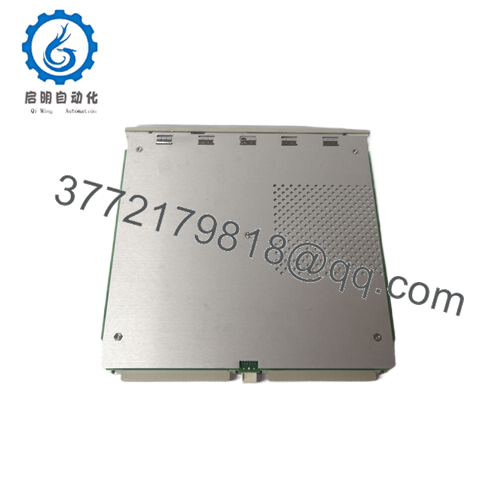
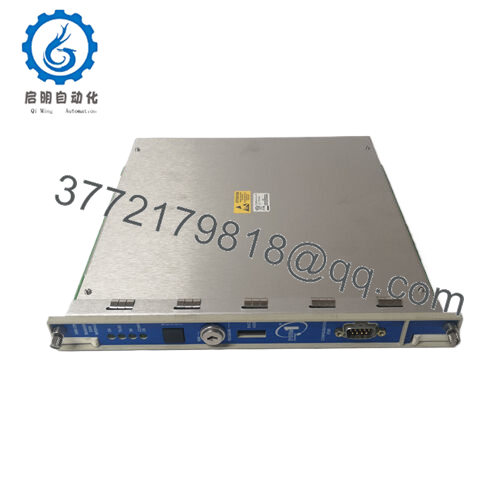
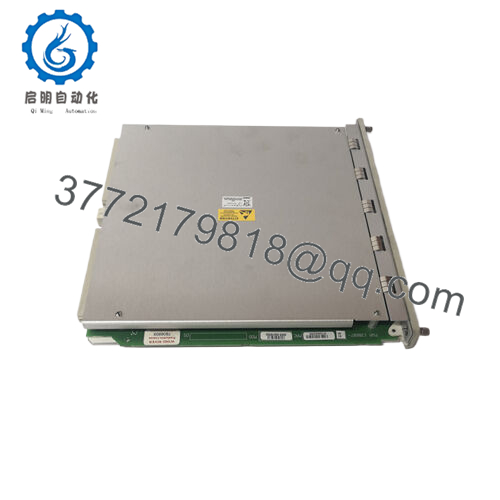
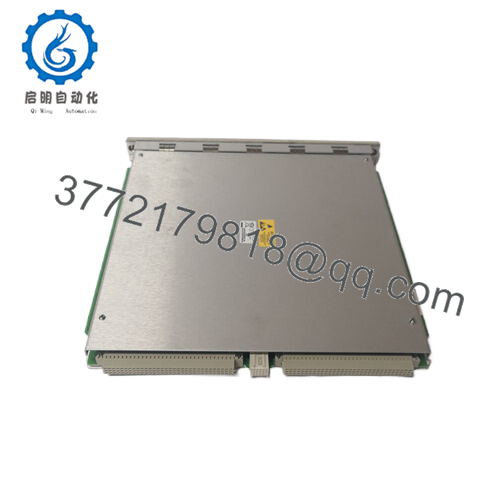
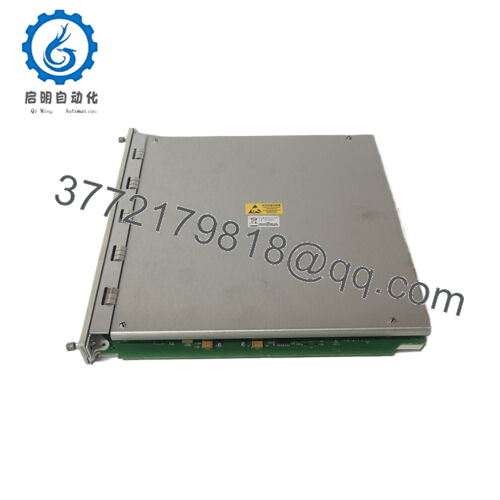
 WhatsApp: +86 16626708626
WhatsApp: +86 16626708626 Email:
Email:  Phone: +86 16626708626
Phone: +86 16626708626
